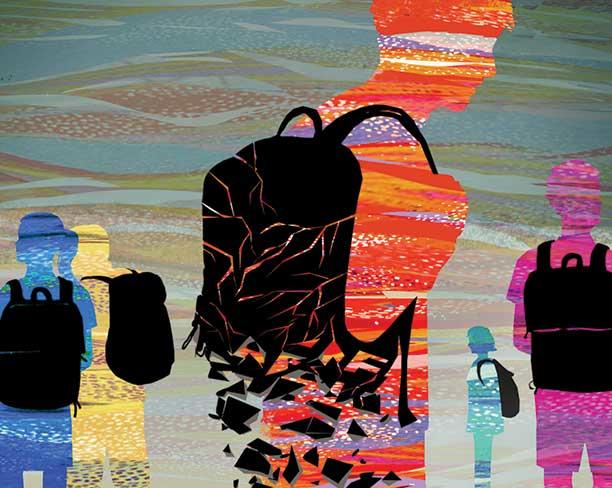Psychology: Bias, Quantified
New study explores how bias leads to more school punishments for black children
“Differences in disciplinary action get overlooked in the discussion around racial differences in education. But it’s really consequential,” said Travis Riddle, a staff scientist at the National Institute of Mental Health who, while a postdoctoral scholar at Princeton, co-authored the study with Princeton professor of psychology Stacey Sinclair. Previous studies have shown that punishments such as suspension and expulsion, which interrupt learning and remove students from their school community, are associated with increased risk of dropping out or getting arrested.
The new study drew upon data about the biases of more than a million Americans and punishment disparities between black and white students in 96,000 schools in nearly all of the nation’s approximately 3,200 counties. It compared the rates of punishment in five categories: in-school suspension, out-of-school suspension, expulsion, arrest, and law-enforcement referral.
The study combined two large data sets: the Department of Education’s 2015–16 biannual survey of disciplinary actions broken down by race for all United States public schools and data collected by Project Implicit, a nonprofit that has gathered information about the biases of millions of people through an online survey since launching in 2002.
Using data about the attitudes of 1.6 million Project Implicit users toward black people, the researchers estimated county-level bias rates, and then compared them with the Department of Education’s data on school punishments. They found that black students experienced higher rates of all punishments but especially out-of-school suspensions, which affected one in seven African American pupils — in contrast to only one in 30 white students. The differences were even higher in counties with higher levels of racial bias.
The correlations don’t prove that bias causes the disparity, but are part of a growing body of evidence that disparities like this one are connected with bias. The results show that racial bias continues to matter in education, said Sinclair. “This is a way of putting a finger on the racial bias and saying it has genuine consequences in important life outcomes.”
Sinclair noted that there are many ways bias could cause these disparities, from individual authority figures choosing to punish black students more harshly to ostensibly neutral policies and procedures — like dress codes targeting particular hairstyles — that disproportionately punish black students. But, she added, “The notion of structural racism clouds the fact that most structures involve people making decisions every day as part of organizations. So for the biases that we’re measuring, it wouldn’t be surprising [for those biases to] express themselves via these structural means.” But the disparities in punishment could also feed the perception that black students are rule-breakers, increasing bias in the communities.
Since 2014, when the Obama administration issued new guidelines highlighting these disparities and means for avoiding them, state legislatures and communities around the country have passed policies to constrain schools’ disciplinary tools. By looking at how the disparities have changed in areas with new polices, “we might be able to get at whether it’s racial bias leading to disciplinary action, or disciplinary action leading to racial bias, or maybe both,” said Riddle. “You could see these changes disentangling the association between bias and disciplinary action because people’s biases can no longer have any role.”
The two data sets Riddle and Sinclair used could also be combined to understand the role bias plays in other disparities, like Advanced Placement exams, said Sinclair. In addition to the disciplinary metrics and many other statistics, the Department of Education data set includes measures of AP class enrollment, test participation, and test performance. Testing which of these steps have disparities associated with bias, said Sinclair, “allows us to see where along the pipeline the bias is most consequential.”












1 Response
Mark Ramsay ’76
6 Years AgoWhy Not Look At Other Causes?
This study appears to want to prove racism is the driving factor for higher school-discipline rates for minorities. Do you believe lack of racism ensures life success? Just look at depressed, mainly white communities.
Why not look for other causations than racism? Why not also study disparities in students' response to school authority? Why not try to correlate incidents to one-parent households? Most successful students get encouragement from home, like I did. Why not try to correlate to that? Why not correlate to social promotion? Or basic living needs being met? Perhaps talk with successful black people for their opinions on your study design, like Dr. Ben Carson and Condoleeza Rice.
Good luck getting truthful interviews from school personnel.
We saw how dangerous outcome-based discipline can be, and any study that recommends it. Recall that the Parkland, Fla., shooter was noted to have extreme prior behavior. It wasn't addressed while he was in school, due to Obama-era federal school-discipline regulations which no bureaucrat would deem subordinate to better judgment.